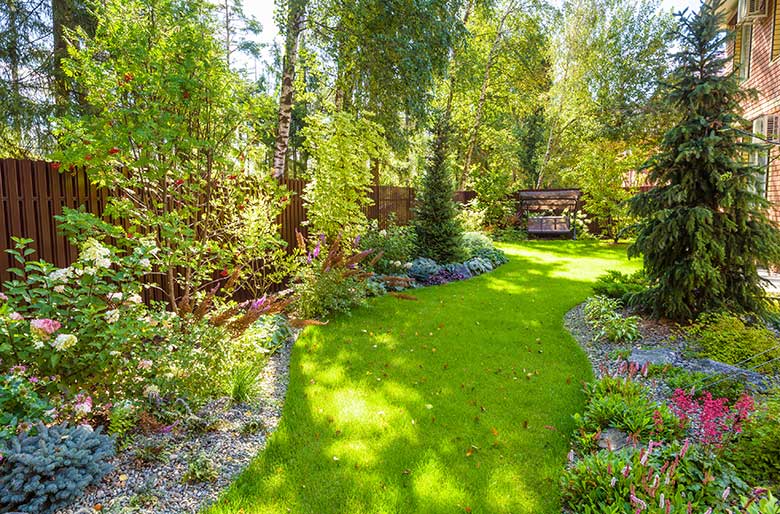Get with the Program
Get to know your site

Getting to know your site is critical in help ing you lo create a more sustainable landscape. Consider the follow ing option s in caring for your land:
- Be sure you are not removing desirable native plants that are already well adapted to your site.
- Consider how much sunlight your site gets over the course of a day.
- Know your soil type! Does your soil hold moisture? How quickly does it drain? This can help you in choosing the right species and storm water management techniques.
- Plant a diverse mix of native species and understand how your chosen plants might ‘creep’ into adjacent are as.
- Over time, the cost of using native plants for landscaping is less than non-native plants. Think of our plants as long-term investments that can be phased in as your budget allow
- Make sure plants are not dug from the wild. This depletes the resource and many species do not thrive after transplanting.
- Consider interseeding (no till) or plugging plants into existing vegetation in places such as thin lawns, or sparsely vegetated old fields. This can result in fewer new weeds.
- Consider using shade trees to screen your home from the sun. They help keep you comfortable, and save money on air conditioning.
Green Bin Composting
We are lucky in HRM to have an advanced recycling program than can help us in managing our waste. Significant accumulations of grass clippings, leaves, pruned branches, and other vegetative material are typically produced during the growing season. The following guidelines outline the proper handling of these materials to help sustain a low maintenance landscape:
- Use your green bin for leaves & brush, and house & garden plant waste.
- Excess leaf & yard material can be placed alongside the cart using orange or clear plastic bags or heavy paper bags – 20 bag limit, 25 kg (55 lb) maximum weight per bag.
- Branches should be tied in armload – sized bundles – maximum 5 bundles. Each bundle not exceeding 34 kg (75 lb) and no individual piece in the bundle more than 4 feet long (1.2 m) or larger than 8 inches (0.2m) in diameter.
- Create your own compost for your landscape needs. Learn more from HRM or the Resource Recovery Fund Board
- Leave grass clippings on the grass. If possible, use a mulching mower, which will spread the grass clippings through the grass and put nutrients back into the soil.
- If a mulching mower is not available, dispose of grass clippings in your green bin or compost, or spread clippings in a vegetable or flower garden, as a mulch under bushes or add to the soil.
- Rake leaves, seeds, and grass clippings out of the street and gutter.
- Do not dispose of organic debris by dumping it in or near water bodies or sewers.
